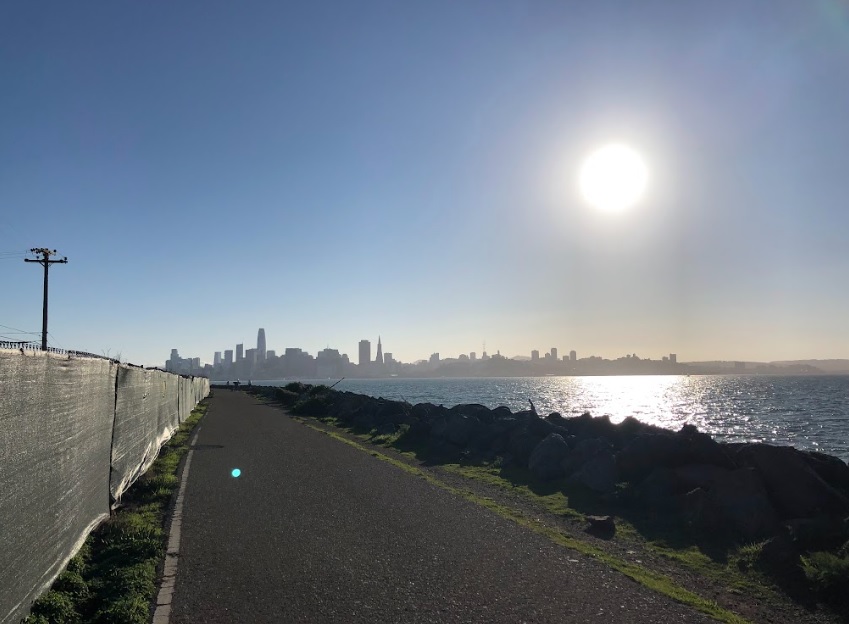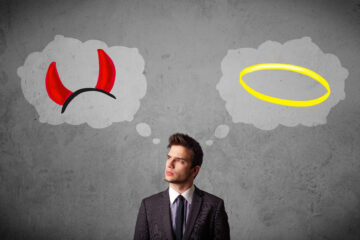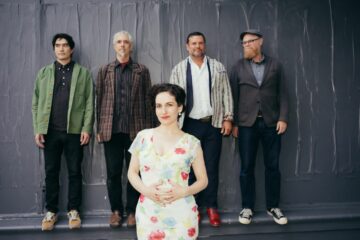Treasure Island to Add 8,000 New Homes Amid Contamination Concerns

From Treasure Island, the San Francisco skyline silhouetted in late afternoon sunlight. Photo by Managing Editor Alex Mak.
Dangerous ground was broken on Treasure Island for a twenty-two-story highrise.
The new tower, slated for completion by 2024, is the first of six mixed-use highrises planned for the contaminated landmass. 8,000 apartments, 300,000 ft2 of retail space, 500 hotel rooms, and 300 “open space” acres comprise the development. The deal is the first breakthrough in a series of false starts for the beleaguered artificial island. Over three thousand people live on its hazardous surface, with space for more in the works.
Revamping Treasure Island has been a slow-going project with many roadblocks. Radioactive materials reside in the sand and soil, leftovers from the dawn of the nuclear age. Residue scrubbed from naval ships intentionally exposed to atomic detonations continues to emit dangerous levels of radiation. Radionuclides of concern include cesium-137, radium-226, thorium-232, strontium-90 and plutonium-239. Plutonium has the longest half-life; it will keep giving off deadly radiation for 24,000 more years.
See also: city officials move low-income residents to Treasure Island despite known health hazards
All around the former naval base, sites remain fenced off due to health hazards the radiation poses. Not everyone is aware of its potential lethality. Kids and teens are known to disregard warnings, oblivious to the impact of their play.
A six-hour flight from the East to West Coast exposes you to ~3.5 millirems of ionizing radiation, less than you’d receive from a chest x-ray (10 mrem). The annual dose for a resident working eight hours a day off the island was 29.3 mrem in one location. The Environmental Protection Agency’s maximum yearly dose allowed in the water supply is 4 mrem.
Flight attendants do not develop health issues like those of TI residents and workers.
25-year-old Asia William of Oakland, California, patrolled Treasure Island enforcing security. “During my first five months working, I was pregnant,” William told investigative reporter Carol Harvey of SF BayView. “The company didn’t inform me I was walking in radioactive areas or prepare me with special shoes or safety equipment. Before I knew the island was contaminated, I tracked toxins into my home.”
“While working on Treasure Island I became familiar with the residents, and part of my job was to protect them. Most residents are poor and people of color, some formerly homeless. I’m offended that they are poisoned from instruments of war. I worked there, so I was being affected by it, too.”
A troubled past
Throughout the 1940’s and into the fifties, the United States government set off dozens of air, surface, and underwater nuclear explosions. A handful of naval ships were anchored in staggered proximity to the infamous Bikini Atoll tests. Miles out of danger, high-ranking military officers had stationed their soldiers aboard ships on the fringes of the blast zone. The exercise, what author Rebecca Solnit called a rehearsal for the end of the world, was intended to toughen their skins to nuclear warfare. Instead it gave them tumors.
Those fearsome displays of heat, power, and hubris inflicted permanent physical and psychological damage. Soldiers returned home with radiation burns. Some lost their teeth. Others developed latent cancers.
History calls these men “atomic veterans.” The veterans call themselves Guinea pigs.
Many ships were atomized in the detonations or sunk by the ensuing shockwaves. Those that weren’t, like the vessels on which the atomic veterans sailed, were tugged back to American shores, through the Golden Gate, and docked at Treasure Island. Like a paperclip briefly magnetized by your favorite fridge décor, metal can be irradiated, but it’s the fallout scrubbed from their hulls that poses the most danger.
Exposed to its cancerous rays in the process, soldiers stripped the radiation from the ships with simple soap and water, but radionuclides aren’t bacteria. They didn’t eliminate the threat. The soil and sands of Treasure Island absorbed the radioactive runoff instead, where it will remain hazardous for decades, maybe centuries. Treasure Islanders have been living and working in the shadows of mushroom clouds.
Invisible Legacies
The last of these ships was scrapped in 1997, lending an impression that the problem had been solved. It’s as if military officials expected civilians wouldn’t understand radiation’s transitive properties, or that it enters the body in three different ways. Alpha particles are sometimes visible to the naked eye: flakes of nuclear fallout, ashes of vaporized debris. Alpha and beta particles can settle in the hair and skin, causing deep and painful burns.
“In April 2017, while foot patrolling and checking alarms at a vacant apartment next to Bigelow Court, I had to walk through grass that made my left leg itchy as if multiple bugs were biting at my skin. Even through my thick leggings and boots, I could feel it,” Asia William said.
Those particles are, thankfully, removable from hair and skin with immediate, thorough showering. The harm exists in their residence on the body and ingestion. The last kind of ionizing ray is the most familiar. Gamma rays can penetrate almost any substance, even concrete. Their incredible destructive power is feared because of the irreparable damage they do to the body. They can shred every kind of cell, ripping apart one’s DNA, zapping the immune system to induce systemic organ failure.
“My leg developed black marks and irritation that reappeared only when I returned to this area,” said William. “Neither Admiral Security nor Treasure Island authorities warned me that Bigelow Court was super-toxic with PCBs (chemicals) and radiation. In 2021, the marks that look like radiation burns are still there.”
A lethal waiting game
Radiation accumulates in the body. Once absorbed, the damage is done. You just won’t notice right away. Severe radiation poisoning can kill after one massive dose, like after what happened at Chernobyl or Hiroshima. It can also kill over time, in low doses from a constant source. Alpha and beta particles lie in and on the sand, soil, and rocks of Treasure Island. Strong winds can resuspend them in the air, making them breathable.
Radiation accumulates in the body. Once it’s there, the damage is done. You just may not notice right away. Severe radiation poisoning can kill with one massive dose, like at Ground Zero in Chernobyl or Hiroshima. It can also kill over time, in low doses from a constant source. Strong winds can resuspend alpha and beta particles waiting in the sand, soil, and rocks of Treasure Island, making them ingestible, breathable.
“I was breathing heavy dust and coughing up mucus all the time,” William said. “Before entering the old movie theater and roller rink, I would close my mouth and nose when patrolling these buildings which later I learned are full of asbestos! I stepped on heaps of dead birds while…[stopping] people from doing unauthorized video shoots in an area full of lead that causes brain damage.”
“My supervisor told me to order a family to deflate a bounce-house they put up for their child’s birthday party because the spikes they put into the ground would ‘reactivate the radiation. Can’t dig up the radiation,’ he laughed. ‘Don’t worry,’ he added. ‘The radiation is cleaned by the Navy.’”
Had Asia Williams kept her job on Treasure Island, her symptoms may very well have gotten worse. A ten-year-old boy living on the island with his mother was recently diagnosed with a brain tumor.
The Navy and the City of San Francisco insist Treasure Island is safe. Those who live and work there say otherwise.










